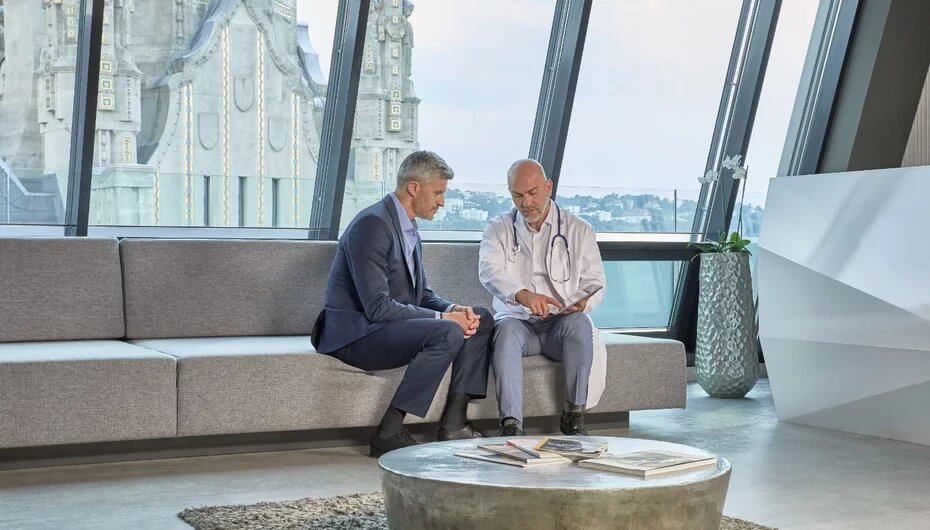Go for regular check-ups over the age of 40!
According to Dr. Rose Private Hospital’s urologist, a very important factor in a prostate examination is to check the PSA level with a lab test, complemented by a physical examination. PSA (prostate specific antigen) is a protein produced by the prostate gland and is therefore only found in men. A lab test with a blood test may indicate a disease because the serum level of the protein increases during various diseases of the prostate.
The prostate is an organ the size of a ping-pong ball, and any malignant lesions on its surface can be palpated. Some tumors are so small that they do not raise the PSA level and yet are palpable on physical examination, which is why a physical examination is necessary for proper screening.
If both test results are negative, it is worth repeating the screening tests after one year. If test results are in the grey zone or positive, further specialist tests should be continued.
What if there’s a high PSA level?
Professionals can draw conclusions from changes in PSA levels by looking at the doubling time, i.e., the time it takes for PSA levels to double, taking into account that normal PSA levels also increase with age.
The rate of increase in the PSA level is likely to increase rapidly in cases of prostate cancer, hence a physical examination is very important. If the increase in the PSA level is faster than expected - which should also be compared with the size of the prostate - then further action is needed.
If there is a suspicion...
In such cases, the next step is a Multiparametric MRI scan, which will show whether there is a risk of a tumor. This is followed by ultrasound-guided tissue sampling of lesions seen in specific areas on the MRI scan: a biopsy. An ultrasound scan of the prostate does not show whether the patient has a tumor as imaging tests only confirm a suspicion, and malignancy can only be verified with a biopsy.
The result of the biopsy tissue sample determines the direction of further investigation. In the case of malignant tumors, the decision regarding treatment is a multidisciplinary process, with the urologist leading the patients’ examinations and summarizing the data to decide on treatment with the involvement of the oncoteam consisting of a urologist, an oncologist, a radiologist, a radiotherapist and a pathologist, who decide on the most appropriate treatment for each patient.
Chances of recovery
If we divide prostate tumors into four stages, the first two stages are 100% curable, stage three is very curable with individualized therapy, and in stage four normal life can be extended.
How can we prevent prostate cancer?
Nutrition is important in prevention, as it is very important to consume unsaturated fatty acids, eat plenty of greens, and eat a mixed diet - urologists recommend exactly the same diet for men as cardiologists.
Although prostate cancer is not hereditary, men who have a family history of the disease are three times more likely to develop it. There is clear evidence that men in certain physical occupations are much more likely to develop malignant prostate cancer than men in other lines of work.
Since prostate cancer cannot be detected by self-examination, we recommend that all men over 40 should attend an annual screening, because today prostate cancer can be easily screened and effectively cured.
